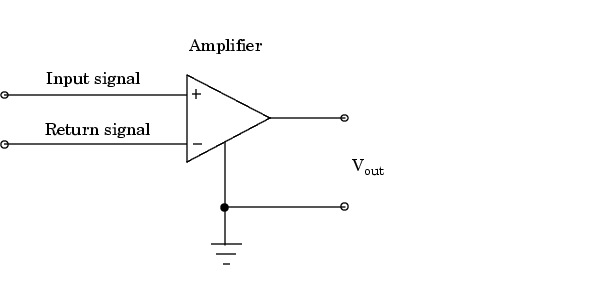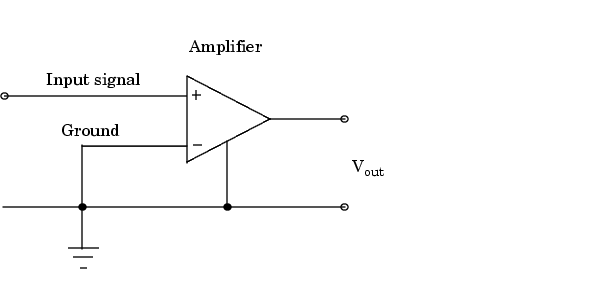

| Data Acquisition Toolbox |   |
Channel Configuration
You can configure input channels in one of these two ways:
Your choice of input channel configuration might depend on whether the input signal is floating or grounded.
A floating signal uses an isolated ground reference and is not connected to the building ground. As a result, the input signal and hardware device are not connected to a common reference, which can cause the input signal to exceed the valid range of the hardware device. To circumvent this problem, you must connect the signal to the onboard ground of the device. Examples of floating signal sources include ungrounded thermocouples and battery devices.
A grounded signal is connected to the building ground. As a result, the input signal and hardware device are connected to a common reference. Examples of grounded signal sources include nonisolated instrument outputs and devices that are connected to the building power system.
Differential Inputs
When you configure your hardware for differential input, there are two signal wires associated with each input signal -- one for the input signal and one for the reference (return) signal. The measurement is the difference in voltage between the two wires, which helps reduce noise and any voltage that is common to both wires.
As shown below, the input signal is connected to the positive amplifier socket (labeled +) and the return signal is connected to the negative amplifier socket (labeled -). The amplifier has a third connector that allows these signals to be referenced to ground.

National Instruments recommends that you use differential inputs under any of these conditions:
Single-Ended Inputs
When you configure your hardware for single-ended input, there is one signal wire associated with each input signal, and each input signal is connected to the same ground. Single-ended measurements are more susceptible to noise than differential measurements because of differences in the signal paths.
As shown below, the input signal is connected to the positive amplifier socket (labeled +) and the ground is connected to the negative amplifier socket (labeled -).

National Instruments suggests that you can use single-ended inputs under any of these conditions:
You should use differential input connectors for any input signal that does not meet the preceding conditions. You can configure many National Instruments boards for two different types of single-ended connections:
Refer to your National Instruments hardware documentation for more information about RSE and NRSE connections.
 | Quantization | Transferring Data from Hardware to System Memory |  |